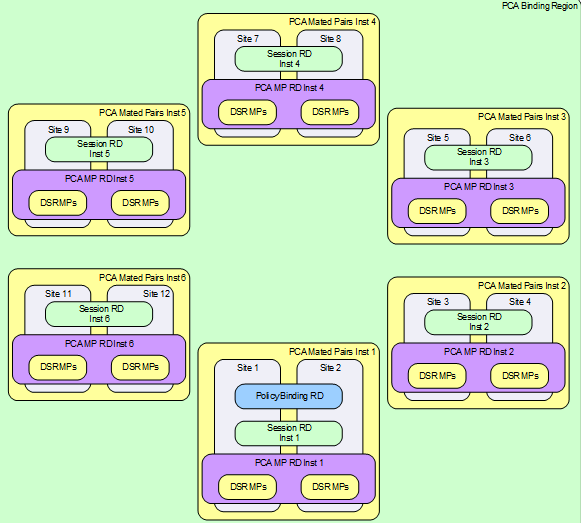This section describes the makeup of a PCA network,
regardless of its size.
Figure 2-3
illustrates an example PCA network.
- A PCA Network can have up to 16 mated pairs or 32
sites, or can be as small as a single site. A PCA Network can also have up to 5
mated triplets.
- The PCA Binding Region provides the scope of the Policy
Binding database. Binding records are accessible from every PCA DSR where the
PDRA function is enabled in the Region.
- The Binding database need not be confined to a single
mated pair or mated triplet.
- A PCA Mated Sites Place Association provides the scope
for an instance of the Session database. Session records are accessible from
each PCA DSR in the Mated Sites.
- Clients and PCRFs/OCSs have primary connections to
their local PCA and secondary/tertiary connections to the mate(s) of their
local PCA.
- PCA DSRs are connected to each other on the External
Signaling Network. Each PCA site must be reachable from every other PCA site in
the Region for Diameter signaling.
- The external signaling network handles stack events,
database replication, and Diameter signaling. All three are required for the
Diameter signaling to function correctly and with the required level of
redundancy. Services (configured using the
screen) can be used to enforce
separation of different types of traffic.
See
PCA Scalability
for details on how the Policy DRA feature can scale from very small lab and
trial systems to large multi-site deployments.




